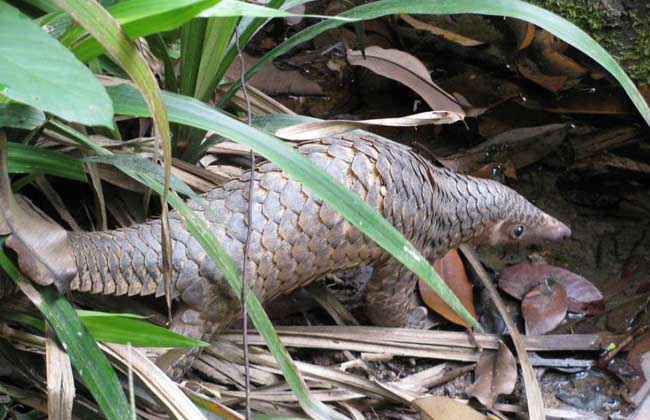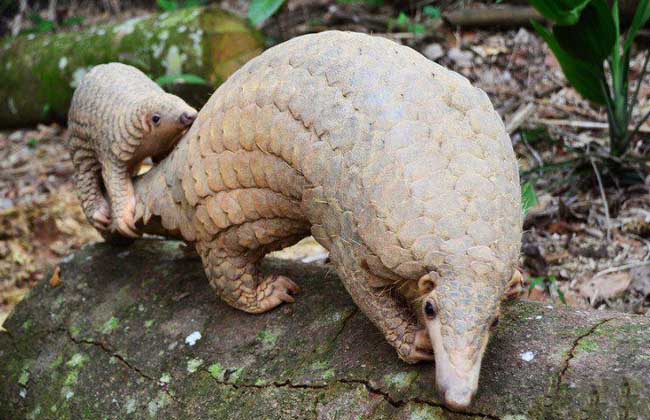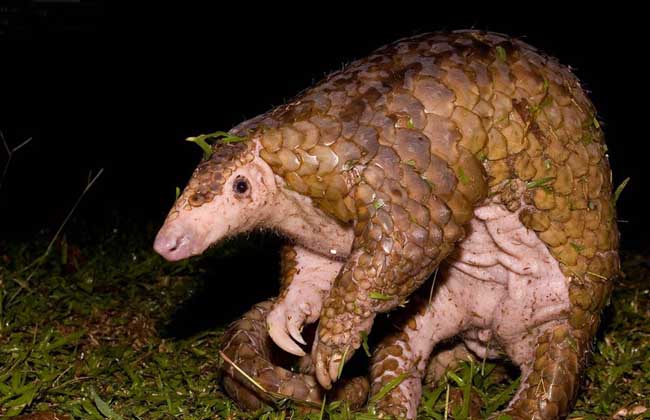How many levels of animal protection are pangolins?

Pangolins often live in subtropical deciduous forests, often hide in caves during the day, go out for food at night, go out at night, curl up into balls when they encounter enemies, and are rare in the wild. Private hunting and consumption are prohibited in China. Let's take a look at how many levels of protected animals pangolins are!
How many levels of animal protection is pangolin?
Pangolin national second-level protection of animals. Pangolins are protected by law in Asia, and the Convention on International Trade in Endangered species of Wild Fauna and Flora also banned any international trade in pangolins in 2002, but judging from the current distribution of pangolins in China, in order to appeal to people to better protect pangolins, pangolins should be upgraded to first-class protected animals.
The living habits of pangolin
1. Eating habits: pangolins mainly feed on termites, as well as ants and their larvae, bees, wasps and other insect larvae. The stomach of an adult pangolin can hold up to 500 grams of termites. According to the observation of scientists, in 250 mu of woodland, as long as there is an adult pangolin, termites will not cause harm to the forest, it can be seen that pangolin plays an important role in protecting forests, dams, maintaining ecological balance, human health and so on.
2. Reproduction: pangolin is a viviparous animal. The time of mating is mainly from April to May. During estrus, male and female cohabit, then separate after mating, and the delivery period is from December to January of the following year. The duration of estrus of male pangolin is about 5-6 months, and the estrus of male is long, and the estrus of male is non-cyclical. The female has 2-5 estrus cycles, the estrous cycle is 12-25 days, and the female is no longer in estrus after conception. Males look for females everywhere during estrus, cohabitation of male and female during estrus, separation after mating, one fetus a year, and three births in 2 years under artificial feeding conditions.
3. Build a hole
① Summer Cave: summer residence is called Xia Dong. It is built on a cool, ventilated hillside to avoid pouring into Rain Water. The tunnel is shorter, about 30 cm, and the structure is relatively simple.
② Winter Cave: winter dwelling is called Winter Cave. It is built in a place with low terrain and a vertical height of more than 4 meters from the ground. The structure of the cave is more complex. The tunnel is curved and shaped like a gourd. At intervals, there is an earth wall piled with earth, which can reach more than 10 meters in length. It also passes through the nests of two or three termites, becoming its winter "granary". At the end of the cave, there is a more spacious concave hole. Covered with soft weeds to keep warm, it is its overwintering "bedroom" and is also used as a "nursery".
Population distribution of pangolin
1. Pangolin: pangolin is a kind of pangolin mainly distributed in Africa. It gets its name because of its large size. It feeds on ants and termites. It is the largest species of pangolin, mainly distributed in Uganda, Tanzania and western Kenya.
2. South African pangolin: South African pangolin, also known as red pangolin, is distributed in the savannas and open woodlands of Chad, South Sudan, East Africa and Southern Africa.
3. Tree pangolins: tree pangolins, also known as scale white-bellied pangolins, live in secondary forests and are indigenous to Africa, ranging from Senegal to Western Kenya and southern Africa to Zambia.
4. Long-tailed pangolin: long-tailed pangolin, also known as long-tailed mud carp, black-bellied mud carp, etc., distributed in Angola, Guinea, Senegal, Congo Estuary and other places.
5. Indian pangolins: Indian pangolins generally inhabit moist places such as foothills, hills or thickets, pebbles and muddy land, mainly in India, Sri Lanka, western Yunnan, China and other places.
6. Chinese pangolins: Chinese pangolins inhabit the moist forests of hills, foothills and plains and eat termites, ants, bees or other insects with long tongues. Predators and birds are natural enemies and are occasionally attacked by domestic dogs.
7. Malay pangolins: Malay pangolins, also known as Malay pangolins, Java mud carp, etc., are distributed in low-altitude forests and secondary forests in Thailand, Malaysia, Myanmar and Indonesia.
8. Philippine pangolins: Philippine pangolins are endangered animals of the family Lepidoptera, which mostly dig holes in the grass in the foothills or moist places in hilly thickets, mainly distributed in the Philippines.
Related
- A course of planting techniques and methods on how to grow carrots
- How to plant the latest tulips?
- Is it better to pick tea in the morning or in the afternoon? When is the best time for tea to be picked? what is the third or fifth tea?
- Launch Yuanxiao Happy combination Haocha + Tea Yuan healthy Taste
- Penghu Tourism "Fireworks 20 Parade with You"
- 2022 West Lake Happiness holds "Digital Revitalization Voucher" and draws iphone13 and laptop.
- Banqiao Fuzhou social houses are designed to change start-up combined with police elimination to create a safe and livable environment
- The convenient measure of "mechanical weeding" in Xinbei has been abused and the Agriculture Bureau has imposed heavy penalties on the illegal land consolidation.
- Changgeng University Joins Hands with Four Memory Factories to Rescue Memory Talent Shortage
- The list of Taiwan's top 100 MVP managers is listed by the Director-General of the Farmers' Association of Sanxia District.



